How to plant cucumbers in a greenhouse with seedlings?
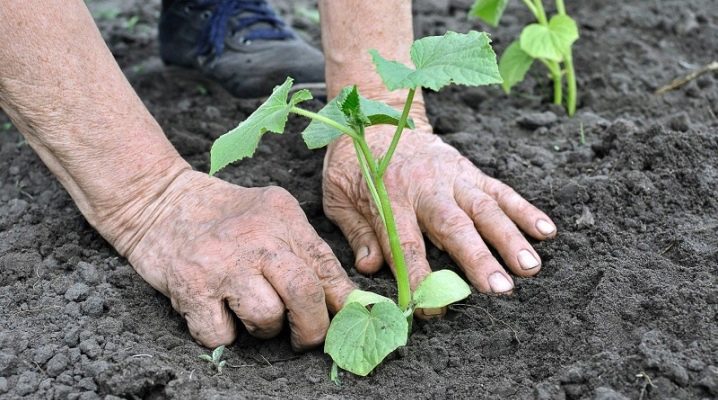
Cucumbers are one of the most famous crops that are not too demanding on growing conditions. Planting cucumber seedlings in a greenhouse is one of the most important stages in the growing process of this vegetable.
Many summer residents do this procedure incorrectly, which negatively affects the quality and quantity of the crop. In order to prevent such mistakes, and to get the desired result, it is necessary to strictly adhere to the transplantation scheme, as well as to provide competent care for the culture.
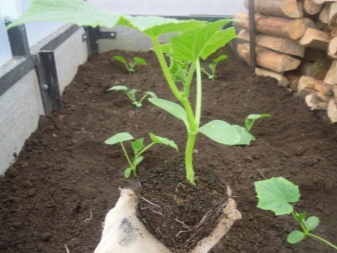

Terms and conditions
Untimely planting of cucumber seedlings in a greenhouse under a film or without it can have extremely negative consequences. As a result of this, very often plants inhibit growth, and sometimes they can pick up various diseases. All this negatively affects the quality of the crop and the taste of the crop. In the process of planting, it is imperative to take into account factors such as soil temperature, seedling age and atmospheric conditions. It is worth planting in greenhouse conditions using seedlings with strict adherence to all the rules and regulations that will allow you to get a good harvest at the output. It is the greenhouse conditions that are optimal for such a cultivation of this vegetable. So, polycarbonate greenhouses are in great demand in the Urals, where it is not possible to plant cucumbers in the open field.
One of the most important points to pay attention to is the air temperature. The fact is that cucumbers begin to grow actively precisely in the presence of heat, and therefore it is extremely important to make sure that the temperature of the soil and air fully corresponds to the required parameters. When planting cucumbers in a greenhouse, temperature indicators must be measured at a soil depth of at least 10 cm. The temperature must be at least +15 degrees Celsius for the crop to grow. If the soil is colder, then there can be no question of any growth of cucumbers.
The air temperature inside the greenhouse is also important. It should not be higher than +20 degrees Celsius, and at night it cannot go below +15 degrees. That is why it is recommended by the time of landing to make sure that the weather conditions no longer imply sudden changes in night or day temperatures, since even the densest polycarbonate is not able to cope with such changes. Such fluctuations negatively affect the health of the culture and weaken it.
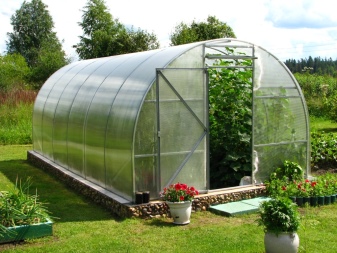
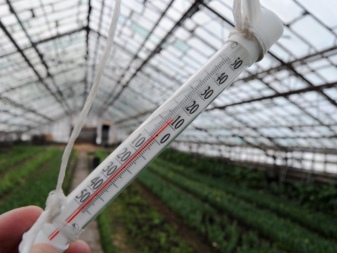
If a transplant of cucumber seedlings is carried out, then the age of the seedlings is extremely important. It must be at least 25 days. By this time, several real leaves have already appeared, which contributes to a faster and better growth of the culture. If these leaves have not formed, then it is necessary to hold the seedlings for a few more days at home.
It is not recommended to transplant too early, since at this stage of growth the plants do not differ in strength and are characterized by susceptibility to various diseases. However, it is also necessary to ensure that there is no overgrowth of seedlings, as this can also negatively affect the ability of the culture to grow further. The main problem is that the root system of a vegetable is not able to develop in a small glass, which causes a lack of nutrients for growth, so it will be necessary to transplant seedlings.
The timing of planting seedlings varies from region to region. The main feature of a polycarbonate greenhouse is that it retains heat perfectly, but it is still necessary to take into account the peculiarities of the region. For example, in southern Russia, planting is usually done in April, in the middle lane, you can resettle seedlings in May, but in the Urals it is best to do this in early summer.
It should be noted that some summer residents check with the lunar calendar in order to provide the most suitable conditions for growing a vegetable, choosing the optimal date (number) for planting a crop.


Soil preparation
One of the most important steps that directly affects a crop's ability to grow is soil preparation. The ideal solution for cucumbers is loose, fertile soil, which is neutral in acidity. It is imperative to carry out its disinfection in order to prevent contamination of the culture with various pathogens. To do this, it will be enough to water the soil with boiling water or a solution of potassium permanganate. This is extremely important especially if in previous seasons the culture was affected by fungus or other diseases. In case of fungal infection, you can additionally treat the soil with Bordeaux liquid. Soil preparation must be carried out in advance several weeks before planting, and not immediately before planting seedlings.
An excellent fertilizer for these purposes is humus and wood ash, the combination of which allows the soil to be provided with all important mineral components, which will help the cucumbers grow in the future. If you need to make the soil looser, you can add sand or sawdust, which are an excellent solution when preparing the soil for planting cucumbers. If the soil is acidic, then the acidity can be neutralized with chalk and dolomite flour. They show themselves excellently in the fight against high acidity. You can measure the acidity level using ordinary litmus paper, but you should not neglect this stage, as it directly affects the quality of the crop.



How to plant correctly?
The scheme of planting cucumbers is important, which depends both on the type of culture, and on the characteristics of the variety itself. Among the generally accepted norms for growing cucumbers in a greenhouse, the following can be distinguished.
- One-line landing. A distinctive feature of such a planting is that the bushes should be planted in one row, and the interval is no more than 30 cm.As for the width of the beds, it should be about 50 cm.This scheme is actively used when growing high-yielding hybrid cucumbers.
- A two-line scheme, which involves planting a crop at a distance of 40 cm in 2 rows. At the same time, such a scheme is distinguished by a rather large bed width, which is about 90 cm. The main advantage of such a planting is that it becomes much more comfortable to get rid of shoots and leaves, which does not allow too much thickening.
- Chess order. This scheme is actively used in the process of growing cucumbers in greenhouse conditions. Its main advantage is that with such a planting, the bushes do not block each other, so that each of them receives the required amount of light. The unique features of the scheme make it an excellent solution for varieties with large fruits. In this case, the distance between the bushes is important, which should be at least 40 cm. With a competent approach, a huge number of plants can be placed on one bed.
The selection of the optimal planting pattern is essential to ensure the normal development of cucumbers and their health. In addition, it is important to maintain the spacing between the cucumber bushes, as this determines whether the culture receives the necessary amount of nutrients and moisture, as well as sunlight.


It is important not only the correct planting scheme for cucumbers, but also the fact which crops will be planted nearby, which is especially important in cramped greenhouse conditions. It is on this that the yield of the crop in the future depends, the taste properties of the fruit and its size. Neighbors for cucumbers must be selected taking into account the irrigation regime, the characteristics of the root system of another culture, the temperature regime and the level of moisture around. In this regard, cultures should be completely suitable for each other, so that you do not have to constantly change the indicators of the external environment. Among the most suitable neighbors for cucumbers are the following.
- Legumes that can be planted around the perimeter or inside the cucumber garden itself. The main advantage of this crop is that it provides the soil with the necessary amount of nitrogen, which after harvesting remains in the soil itself, which positively affects the ability of cucumbers to grow.
- Beet. When planting beets, it will need to be removed before the cucumbers have long lashes. The fact is that these crops are not able to grow at the same time due to the lashes, so beets should be harvested at an early stage of ripening.
- Radish. It grows much faster than the cucumber crop, so the roots will also be dug out before the cucumber bushes begin to change in size.
- Melons can also be an excellent solution for cucumbers. They can be placed on a vertical trellis, as a result of which the shoots will go down. It should be borne in mind that they are quite demanding on the amount of nutrients, therefore, it will be necessary to feed both melons and cucumbers without fail.
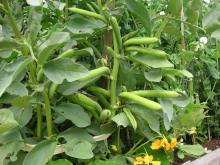
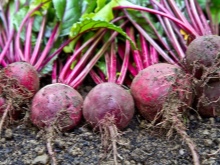
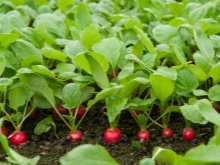
In no case should tomatoes, various herbs, and peppers, which require completely different growing conditions, be planted with cucumbers. To get a good harvest, you need to water, feed and form cucumbers on a regular basis. In addition, it is worth carrying out various activities aimed at providing protection against diseases and pests. In no case should a warm or humid environment be allowed, as it promotes the development of pathogens that can infect cucumbers and do not reduce the entire crop.
One of the most important things to consider when planting and growing in a greenhouse is watering, which is best done with warm water. It is better to abandon the use of a hose immediately, since the pressure can wash out the soil and damage the roots. The most common watering can is an excellent choice for watering. And you can also create a drip irrigation system, which is considered one of the most effective and safe for this crop. As for the frequency of watering, it all depends on the age of the plant and the characteristics of the temperature regime. In hot weather, watering must be done every day, but if there is coolness, you can water the cucumbers every 2 days. In most cases, 5 liters of water per square meter is sufficient to ensure optimal crop growth.
The main advantage of cucumbers is that they perfectly accept both organic and mineral fertilizers, which allows every gardener to put the most convenient option for themselves in the ground. And you can also add humus, which will provide accelerated growth of the crop, especially if the planting was carried out in mid-spring. If you follow all the rules step by step, you can get a high-quality harvest at the output, which will differ in tasty and large fruits.
In the process of growing, close attention must be paid not only to the rules of planting and the creation of favorable conditions, but also to competent care of the crop.
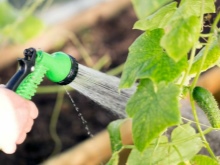















The comment was sent successfully.